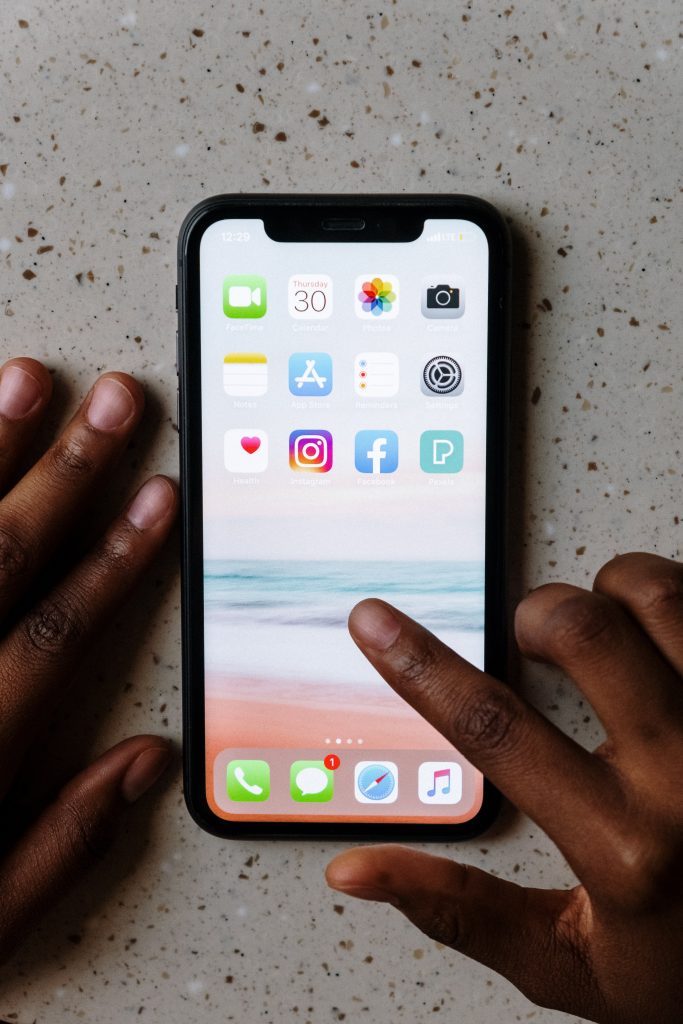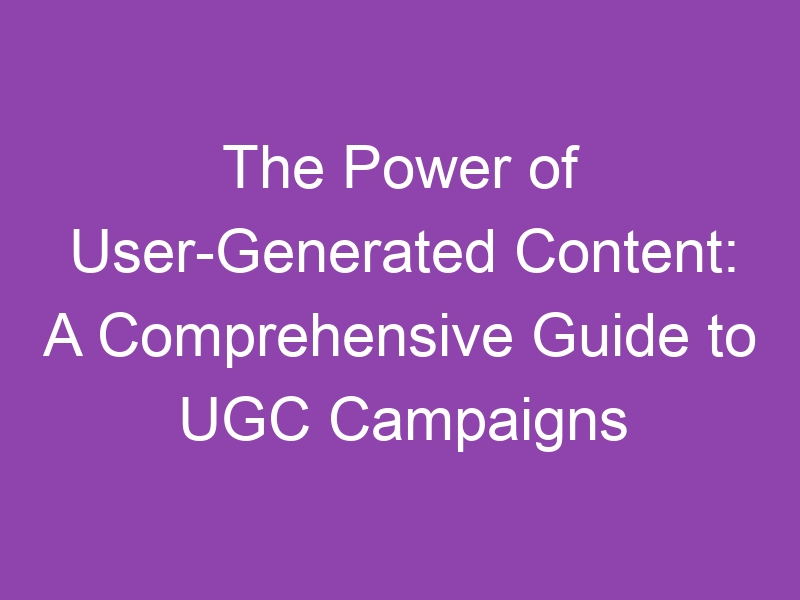Content Outline
- Introduction
- A. Definition of user-generated content on social media
- B. Importance of user-generated content on social media
- Benefits of user-generated content on social media
- Examples of successful user-generated content campaigns on social media
- Challenges of user-generated content on social media
- Best practices for creating user-generated content on social media
- Conclusion
Introduction
User-generated content on social media refers to content that is created by users of a particular platform. This content can take various forms, including text, images, videos, and audio. In recent years, user-generated content has become an integral part of social network platforms, with millions of users sharing their thoughts, experiences, and opinions on a wide range of topics.
The rise of user-generated content has been fueled by the increasing popularity of social network platforms, such as Facebook, Twitter, and Instagram. These platforms provide users with a powerful tool to express themselves and connect with others. In fact, according to a Pew Research Center survey, 72% of American adults use social networks, and a majority of them engage with user-generated content.
One of the key advantages of user-generated content is its authenticity. Unlike traditional forms of advertising, user-generated content is created by real people who are not being paid to promote a product or service. This authenticity can be a powerful marketing tool, as consumers are more likely to trust the opinions of their peers than those of a faceless corporation.
However, there are also some tradeoffs involved in using user-generated content. For example, it can be difficult to control the quality of the content that is being created. Additionally, there is always the risk of negative content, such as complaints or criticism, being shared on social media.
Despite these challenges, user-generated content remains a valuable tool for businesses and individuals looking to connect with their audience on social networks. By encouraging users to share their experiences and opinions, brands can create a more engaging and authentic online presence.
Introduction – A. Definition of user-generated content on social media
User-generated content on social media refers to content that is created and shared by users on various social media platforms. This content can include text, images, videos, and other multimedia formats. The rise of social networks has led to an explosion of user-generated content, with users sharing their thoughts, experiences, and opinions on a wide range of topics.
One of the key features of user-generated content on social networks is its authenticity and credibility. Users are more likely to trust content created by their peers than content created by brands or advertisers. This has led to a shift in the way that brands approach marketing, with many now focusing on creating content that encourages user-generated content and engagement.
However, user-generated content on social networks also presents challenges for brands and marketers. It can be difficult to control the narrative and ensure that the content being shared aligns with the brand’s values and messaging. Additionally, user-generated content can sometimes lead to negative feedback or backlash, which can harm a brand’s reputation.
Key factors of user-generated content on social media:
- User-generated content is created and shared by users on social media platforms
- This content can include text, images, videos, and other multimedia formats
- User-generated content is authentic and credible
- User-generated content presents challenges for brands and marketers, including lack of control over the narrative and potential for negative feedback or backlash
Overall, user-generated content on social media is a powerful tool for brands and marketers to engage with their audience and build trust. However, it requires careful planning and management to ensure that it aligns with the brand’s values and messaging.
Introduction – B. Importance of user-generated content on social media
User-generated content on social media refers to content that is created by users and shared across social media platforms. This type of content has become increasingly important for businesses and marketers in recent years, as it provides a unique opportunity to engage with audiences and build brand awareness.
One of the main benefits of user-generated content is that it can help to establish trust and credibility with potential customers. According to a study by Stackla, 86% of consumers say that authenticity is important when deciding which brands to support. User-generated content is seen as more authentic because it is created by real people who have no vested interest in promoting a particular brand or product.
Another benefit of user-generated content is that it can help to increase engagement and reach on social media. According to a study by Hootsuite, posts that include user-generated content receive 28% higher engagement than those that don’t. This is because users are more likely to share and engage with content that they feel a personal connection to.
Overall, user-generated content on social media can be a powerful tool for businesses and marketers looking to engage with audiences and build brand awareness. By encouraging users to create and share content, businesses can establish trust and credibility, increase engagement and reach, and ultimately drive sales and revenue.
Sources:
Benefits of User-Generated Content on Social Media
User-generated content on social media refers to content that is created and shared by users on various social media platforms. This can include anything from photos and videos to comments and reviews. Here are some benefits of user-generated content:
- Increased Authenticity: User-generated content is often perceived as more authentic and trustworthy than branded content. According to a study by Stackla, 86% of consumers say authenticity is important when deciding what brands they like and support.
- Cost-Effective: User-generated content can be a cost-effective way for brands to create content. Instead of spending time and money on creating their own content, brands can rely on their followers to create it for them.
- Engagement: User-generated content can lead to higher engagement rates on social media. According to a study by Adweek, user-generated content on Instagram generates 4.5 times more engagement than branded content.
- Increased Reach: User-generated content can help increase a brand’s reach on social media. When users create content and share it with their followers, the brand is exposed to a wider audience.
However, there are also some tradeoffs to consider when using user-generated content. Brands may have less control over the content that is created, which can lead to inconsistencies in branding and messaging. Additionally, user-generated content may not always be high quality or relevant to the brand.
Overall, user-generated content can be a valuable tool for brands on social media. By encouraging their followers to create and share content, brands can increase authenticity, engagement, and reach, while also saving time and money.

Examples of successful user-generated content campaigns on social media
User-generated content on social media refers to content that is created and shared by individuals rather than by brands or companies. It can include everything from reviews and comments to photos and videos. User-generated content is a powerful tool for businesses, as it allows them to engage with their audience and build trust.
Here are some examples of successful user-generated content campaigns on social media:
- Coca Cola’s “Taste the Feeling” Campaign: Coca Cola launched a global campaign inviting consumers to share their own taste experiences with the hashtag #TasteTheFeeling. This campaign generated over 1.5 million user-generated posts on social media and increased brand engagement by 19%.
- GoPro’s “Photo of the Day” Campaign: GoPro encourages its customers to submit their best photos and videos taken with their cameras. The best submissions are featured on the company’s website and social media channels. This campaign has helped GoPro build a strong community of brand advocates and has generated over 6 million user-generated posts on Instagram alone.
- Starbucks’ “White Cup Contest” Campaign: Starbucks asked its customers to decorate their white cups and share their designs on social media with the hashtag #WhiteCupContest. The winning design was featured on a limited edition Starbucks cup. This campaign generated over 4,000 user-generated posts on Instagram and helped Starbucks build a stronger connection with its customers.
These successful campaigns have several things in common:
- They encourage user participation
- They provide a clear and simple call-to-action
- They use a unique and memorable hashtag
- They offer an incentive or reward
User-generated content on social media can be a powerful tool for businesses. By encouraging user participation and providing an incentive, businesses can build trust and engagement with their audience.
Challenges of user-generated content on social media
User-generated content on social media refers to content that is created and shared by users on social media platforms. While user-generated content can be a valuable source of information, it also presents several challenges that need to be addressed.
1. Quality control
One of the biggest challenges of user-generated content on social media is maintaining quality control. Since anyone can create and share content on social media, there is a risk of inaccurate, misleading, or inappropriate content being circulated. This can have serious consequences, particularly in the case of sensitive topics such as health or politics. To address this challenge, social media platforms need to implement measures to verify the accuracy and reliability of user-generated content.
2. Legal issues
User-generated content on social media can also pose legal challenges. For example, there may be copyright issues if users share content that they do not own. Additionally, there may be defamation issues if users share content that is untrue and damaging to an individual or organization’s reputation. To mitigate these risks, social media platforms need to have clear guidelines on what types of content are allowed and take swift action to remove any content that violates those guidelines.
3. Privacy concerns
Another challenge of user-generated content on social media is privacy concerns. Users may inadvertently share personal information or sensitive data that could be used for malicious purposes. Social media platforms need to educate users on the importance of privacy and provide tools to help users protect their personal information.
4. Brand reputation
User-generated content can also impact a brand’s reputation. Negative reviews or comments can harm a brand’s image, while positive reviews can boost it. Social media platforms need to have measures in place to address negative content and promote positive user-generated content. Brands can also leverage user-generated content by encouraging customers to share their experiences and feedback.
In conclusion, while user-generated content on social media can be a valuable source of information, it also presents several challenges that need to be addressed. Quality control, legal issues, privacy concerns, and brand reputation are all factors that need to be considered when dealing with user-generated content on social media.
Best practices for creating user-generated content on social media
User-generated content on social media refers to content that is created by users rather than the brand itself. It is a powerful tool for businesses to engage with their audience and build a community around their brand. However, creating user-generated content requires careful planning and execution to ensure its success.
1. Set clear guidelines
It is important to set clear guidelines for the type of content that is acceptable for user-generated content on social media. This will help ensure that the content aligns with your brand values and messaging. Be specific about the type of content you are looking for, the tone of voice, and the do’s and don’ts. Consider using a brand style guide to ensure consistency across all user-generated content.
2. Encourage participation
One of the key benefits of user-generated content is that it can help increase engagement and build a community around your brand. To encourage participation, consider running a social media contest or campaign that incentivizes users to create content. This can be a great way to generate buzz and increase brand awareness.
3. Monitor and moderate
While user-generated content can be a powerful tool, it is important to monitor and moderate the content to ensure that it aligns with your brand values. Consider using a social media management tool to monitor and manage the content. This will help you identify any potential issues and respond to them in a timely manner.
4. Give credit where credit is due
When sharing user-generated content, it is important to give credit to the user who created it. This not only shows that you value their contribution but also helps build a sense of community and encourages further participation. Consider tagging the user in your post or giving them a shoutout in your Instagram stories.
In conclusion, user-generated content on social media refers to content that is created by users rather than the brand itself. To create successful user-generated content, it is important to set clear guidelines, encourage participation, monitor and moderate the content, and give credit where credit is due. By following these best practices, you can create a powerful tool for engaging with your audience and building a community around your brand.
Sources: Hootsuite, Social Media Examiner
Conclusion:
In conclusion, user-generated content on social media refers to content that is created and shared by users on various social media platforms. This type of content has become increasingly popular in recent years, with over 3.6 billion people using social media worldwide.
While user-generated content can be a valuable asset for brands and businesses, it is important to consider the potential risks and benefits. On one hand, user-generated content can help to increase brand awareness, engagement, and loyalty. On the other hand, it can also lead to negative publicity and damage to brand reputation if not managed properly.
Therefore, it is crucial for brands to have a clear strategy in place for managing user-generated content on social media. This includes setting guidelines for what type of content is acceptable, monitoring user-generated content for any potential issues, and responding appropriately to any negative feedback or comments.
Overall, user-generated content on social media can be a powerful tool for brands and businesses, but it must be approached with caution and careful consideration of the potential trade-offs involved.
Sources:
– https://www.emarketer.com/content/global-social-network-users-pass-3-billion
– https://blog.hootsuite.com/user-generated-content-guide/



